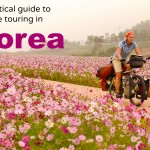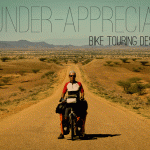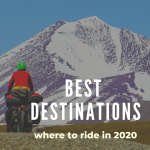Europe Route 2009
France »Spain » Portugal 4,300 kilometers June-July 2006
We set off from Eric's hometown, Obernai , France on June 7th 2006 to follow the Rhine river bicycle route to Mulhouse.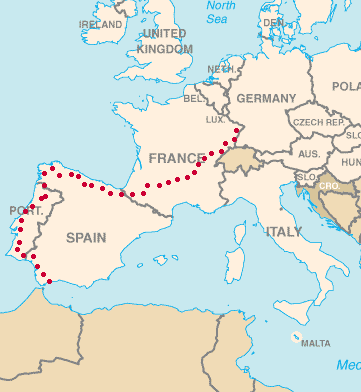 There we continued heading southwest along the Canal du Rhone au Rhin which turned into the Doubs river. More easy cycling awaited us as we next followed the Saône river as far as the city of Chalon sur Saône. At Le Puy en Velay (GR65) we picked up the Via Podensis section of the famous pilgrimage route Camino de Santiago.
There we continued heading southwest along the Canal du Rhone au Rhin which turned into the Doubs river. More easy cycling awaited us as we next followed the Saône river as far as the city of Chalon sur Saône. At Le Puy en Velay (GR65) we picked up the Via Podensis section of the famous pilgrimage route Camino de Santiago.
A thousand kilometers on through Spain, we arrived in Santiago, where we received our official credentials proving we had completed the pilgrimage. In keeping with the pilgrim spirit, we continued on through beautiful Galicia with its cool forests and waterfalls to reach the 'end of the world' at Finisterra. From there we started the pilgrimage in reverse, following the Camino 'backwards' into Portugal. We then hugged the Atlantic coast, enjoying cooler temperatures than inland and some fine coastal riding. Back to Spain and stifling heat near Seville, after which we were in for a hard ride up to picture-perfect Ronda. Swooping down to Marbella brought us to the coast and throngs of tourists. From there it was a short ride to the jumping off point to Africa, Algeciras, where a short ferry ride brought us to the Spanish enclave of Ceuta on the African continent.
West Africa Cycling Route
Morocco » Western Sahara » Mauritania » Senegal » The Gambia »
Guinea Bissau» Guinea » Sierra Leone » Mali » Niger » Burkina Faso » Ghana » Togo » Benin 13,300 Kilometers August 2006 - February 2007
We chose to forgo the well-worn Cairo to Cape Town route in favor of first exploring the sights of West Africa, known for its ethnic diversity, cheerful hospitality and stunning architecture. Immigration into Morocco was a bit hectic owing to the multitudes of travelers wanting to cross the border during the August holiday season. We're big fans of the mountains, so after some relaxation in Martil, a beach town popular with both local and foreign tourists, we climbed up to the hippy-hangout of Chefchaouen in the Rif mountains. An excellent place to relax for a few days and acclimatize yourselves to Africa. From there we continued to the Middle Atlas mountains, and enjoyed ano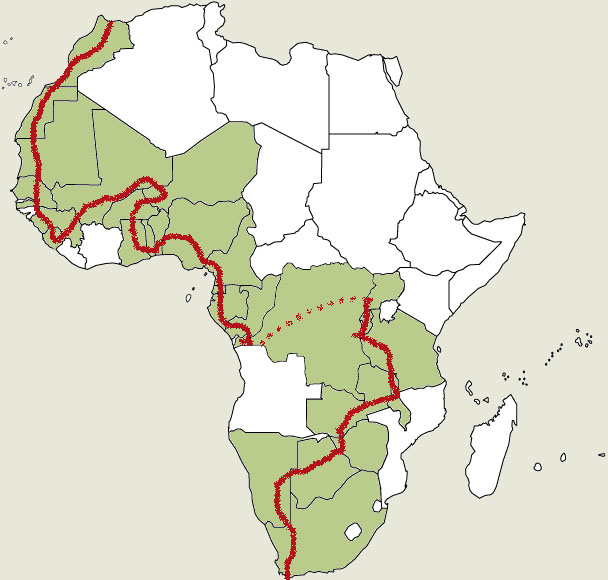 ther long break in Azrou. We swooped down to Marrakesh, found the stifling August heat overpowering, and climbed up the Tizi-n-Test pass at 2,000 meters to cool off and enjoy the views.
ther long break in Azrou. We swooped down to Marrakesh, found the stifling August heat overpowering, and climbed up the Tizi-n-Test pass at 2,000 meters to cool off and enjoy the views.
Next it was down to the colorful market town of Taroudant and the plains. Before heading into Western Sahara, we tackled the arid Anti-Atlas and experienced some of the hottest temperatures of the trip. Southern Morocco and the 10-day ride across the Western Sahara was not only a physical challenge, but a test of our mental endurance as we traversed this desolate landscape. Mauritania brought more sand, and some nasty windstorms, but the smooth tarmac and spectacular desert scenery more than compensated for the hardships.
We whizzed through northern Senegal, did a loop in The Gambia, and then headed back to Senegal to discover the picturesque Cassamance region. A fairly heavy military presence in this troubled region didn't bode well for exploring out-of-the-way places, so we quickly spun on to Guinea Bissau. This tropical, lush country is still recovering from years of civil war and sees few tourists. Next up was Guinea and some lovely cycling through the craggy mountains of the Fouta Djalon. With so much natural beauty, extraordinarily friendly people and bargain prices, this country is a real gem.
Although the mention of Sierra Leone, our next country, conjures up images of child soldiers and blood diamonds for many, we'll always remember this struggling country for the resilience of its people who are fighting to put their troubled past behind them. It's sweltering hot almost year round, but the spirited Sierra Leoneons have an infectious zest for life that will make you forget the heat. Then it was back to Guinea, passing through Farannah, Daboula and Kan Kan on the hot and dry plains of Haute Guineau.
We hit Mali in December, the best time for cycling as temperatures drop and there's even an early morning nip in the air--time to dig out the fleece jacket that had last made an appearance at the Tizi-n-Test pass in Morocco. A relatively developed tourist sector meant toilet paper was easier to find, but on the downside some villagers demanded money for camping. We just didn't receive the same heartfelt welcome we had enjoyed in less-visited countries such as Guinea and Sierra Leone. The Sudanese style mosques are stunning and there's much to see along the small roads following the Niger river between Segou, Massina and Djenne. We couldn't miss the Dogon country, so from Bandiagara we cycled to Teli and admired the cliff dwellings. Then it was on to Douenza and a very exotic market. Africa's answer to monument valley, Hombori, with it's soaring sandstone rock formations, is a long haul from Bamako but worth the extra kilometers. Strong headwinds hampered our progress as we continued on to Gao, which felt like the end of the world.
Not far outside of Gao on the road towards Niger, the tarmac ran out and we were left with either a sandy track or the foundations of the new highway. This new road should be completed by the time you read this, so you'll have an easier time than we did. Niger welcomed us with a smooth tarmac road and a look at the Ayorou market, one of the best in Africa. After spending Christmas 2006 in Niamey, we then headed west towards Burkina Faso.
We just couldn't take the ease of tarmac for too long, so we hit the piste again and set off towards remote Parc National d'Arly nestled deep in the African bush. Ouagadougou was the next major stop, from where we switched directions and started heading south towards Ghana. Northern Ghana was much like neighboring Burkina, and it wasn't until we neared Kumasi that the arid bush gave way to lush rolling hills and tropical landscape. We spent the obligatory few days lazing at the beach (Green Turtle Lodge, Dix Cove) and then followed the coastal route visiting the old forts at Elmina before heading to Accra for a visa run. Next, we spun on towards tiny Togo and the highlands between Atakpame and Kpalime-- great cycling spots if you enjoy climbs. Benin, the birthplace of voudou, has some fascinating places to discover if you take your time to stroll through its markets and old towns. Cycling can be nerve-wracking as traffic is heavy and drivers are the usual maniacs you find throughout the rest of the continent, only in higher concentration.
Central Africa Route Information
Nigeria » Cameroon » Equatorial Guinea » Gabon » Congo-Brazzaville » DRC 8,000 kms Feb - May 2007
Central Africa was, by far, the toughest stretch of the trip. News reports from Nigeria are inevitably about kidnappings in the southern Delta region, violence and poverty in Lagos or corrupt politicians and their heavy-handed henchmen. Our plan was to avoid Lagos altogether, steer clear of religious extremists in the North and skirt around the Delta lest we be taken for expat oil workers and coveted as potentially lucrative kidnapping pawns. Down a rough and sandy track from Save, we crossed the Benin-Nigeria border at a small village called Kaboua that surely hadn't seen a foreign visitor in years.
The first major town we hit was Iganna. Cycling in Nigeria varies from pleasant paved roads with relatively little traffic to extremely dangerous highways where safe driving practices are virtually unknown. Unpaved roads are fairly easily avoided. All in all, most cyclists seem to enjoy Nigeria. The country's got a rotting infrastructure and a rotten government, but the locals are as warm-hearted as you're likely to meet anywhere. Police roadblocks are a common sight throughout the country. Not to worry, the police are so adept at fleecing the local population they're likely to leave you alone. Calabar is probably the nicest Nigerian city for a few days' rest. Heading towards the Ekang border post, the road becomes progressively worse after Oban which is 65 kilometers from Calabar. Camping at the border post should be no problem, but there are no guesthouses on either side. The Nigeria side has a few shops and maybe some place where you can get some basic food.
Rough and rutted roads continue on the Cameroon side. When we passed in 2007, there were paved sections interspersed with unpaved sections, so check for the latest info and keep in mind that these roads will be very rough and maybe impassable during the rainy season. You'll be passing through thick tropical forest and the ride is spectacular. The area near Bamenda is stunning. Try to visit some of the surrounding villages and do a bit of the ring road if possible. Cameroon has some pretty tough cycling because there are lots of steep climbs.
After a visa run in Yaounde, we headed towards Equatorial Guinea, crossing the border at Ebebyin. Not a hot spot for tourists, but if you're in the neighborhood why not go for a visit? Beware of the numerous police checkpoints. We had one pretty close call with a drunken official. There's still quite a bit of unspoilt forest on this part of the continent, so go now before it all disappears. Logging trucks trundling by are a disturbingly common sight. The oil-rich government has got very deep pockets and is paving all major roads so cycling is relatively easy. Leaving Equatorial Guinea via the Cogo border crossing into Gabon was an adventure of its own. First we had to get by the very corrupt officials at the port who insisted we pay extra fees and refused to surrender our passports. We held our ground and eventually were allowed to leave. The boat was crowded beyond even normal African capacity, which meant at least triple what it was designed for. Rough seas and panicky fellow passengers added to the fun.
Gabon greeted us with a piste that turned very muddy, very quickly. We didn't reach a tar road until just before Ntum. Logging trucks rushing by are a nuisance as you leave Libreville heading towards Lambarene, otherwise a beautiful ride through very lush, hilly country. 50 km after Lambarene we were in for more battles with the roads, at one point being forced to hop on a truck near Mouila because the road was under several feet of water.
Authorities at the Nyanga border crossing in Congo were keen to extort some money from us, going so far as to search our panniers and detain us for several hours insisting we needed proof of our status as tourists. They weren't aggressive, but they didn't give up easily. There are a fair number of checkpoints along the way and when we casually tried to pass, feigning ignorance that there was a police office in the distance, were called back by fuming officials and conspiring villagers. Congo is fascinating because its so remote, but that same remoteness can become unsettling when you realize how cut off you are from the rest of the world. Roads can be really bad. At Loutete we had to jump onto a freight train with military escort, the region near Brazzaville not yet being under government control. The situation has surely improved. Brazzaville was surprisingly laid back and not a bad place to rest and recuperate from the rigors of Central Africa.
Political unrest and pockets of violence in the DRC meant that an overland journey was a potentially risky undertaking. Instead, we opted to take a plane from Kinshasa, traverse Congo by air, and land in Goma, on the Rwandan border. From there we restarted the cycling tour and made our way further south.
East Africa Route
Rwanda » Uganda » Burundi »Tanzania 3,400 kilometers July - August 2007
After the rigors of traveling the back roads of Central Africa, we were more than ready for the comforts associated with traveling in tourist friendly East Africa. Rwanda's roads, and just as important, its drivers, are a dream. Smooth tarmac, light traffic and a scarcity of maniacs behind the wheel made cycling a pleasure. Rwanda is a lovely, well-maintained country of neat gardens in front of tidy huts, rubbish-free city streets and breathtaking mountain vistas. Perhaps the only downside was the gawkers, who even find urinating foreigners of interest. The area around Ruhengeri and Gisenyi was particularly spectacular with cobalt blue lakes and volcanic mountains in the background.
Neighboring Uganda ranks up there with Nigeria for traffic chaos, lorries speed past at break-neck speed, buses careen around sharp bends and the traffic gushes in an unending flow around large cities. Traffic worries aside, Uganda's nice for cycling since there's quite a variety of landscapes and a decent infrastructure for tourists who've had enough of roughing it through central Africa.
Burundi was one of our favorites. The people are amongst the friendliest we met and the cool eucalyptus forests a treat to cycle through. But, like Rwanda, this is hilly country and we poured out a lot of sweat to make the kilometers go by. A little help from the energetic village kids on the steepest climbs was a blessing. After traveling through Bujumburu and around Nyanza Lake, we headed towards remote Western Tanzania, crossing the border at Mugina.
Although the rest of Tanzania may be a circus of tourists decked out in safari gear, Western Tanzania sees few visitors. Again, we were faced with a rough and sandy road after entering the country at Manyovu, heading towards Kigoma. At Kigoma, we boarded the MV Liemba for a fascinating maritime journey on LakeTanganyika. At Kasanga we took to our bikes again, on some very rough and remote roads. Next, our route took us up a long climb to Mbeya, from where we swooped down through the verdant tea plantations and into Malawi.
Southern Africa Cycling Route
Malawi » Zambia » Zimbabwe » Botswana » Namibia » South Africa 5,500 kilometers Sept. - Nov. 2007
The areas around Lake Malawi are amongst the most laid-back in Africa and we enjoyed some relaxing days of cycling and lounging on the shores of the vast lake. The 20 hairpin bends leading up to Livingstonia were a tough climb, but the spectacular campsite that awaited us made all the sweat worth it. Then it was on to Lilongwe, before continuing west towards Zambia. The highlight of our visit was the time we spent animal spotting in South Luangwa National Park. The safaris on offer are probably the most reasonably priced on the entire continent. We were actually a bit disappointed with Zambia's other big draw, Victoria Falls. Admittedly, the flow was a fraction of what it can be at its height. All in all, the views really are better from the Zimbabwe side. With all the chaos caused by Mugabe's misrule, we decided to play it safe and headed directly into Botswana after our brief visit to Vic Falls, crossing the border at Kanzungula.
Long distances, light population and loads of animals made for an air of adventure cycling through Botswana. We were enveloped in the vast sky and almost lulled to sleep on the ruler-straight road as we spun on between Kasane, Nata, and Maun.
Arriving in Namibia at the Buitepos border felt like the beginning of the end. Supermarkets replaced corner shops, gone were the rickety shacks serving up rice and beans and the service stations were modern and air conditioned. Windhoek was full of malls and fast food joints, and for a moment we loved being surrounding by the trappings of the world we were familiar with. Of course, the novelty wore off quickly. Our trip inland to Solitaire, Sesriem, Helmenringhausen, Aus, Rosh Pinah and finally to the border at Noordoewer was both the most challenging and the most rewarding of the trip. Jaw-dropping desert scenery but tough going with sand storms, intense heat, and some roads that hadn't seen a grader in many moons.
It was with a sense of relief that we crossed the border into South Africa, having been plagued by doubts as to whether we'd really make it all the way through Africa. The road to Cape Town wasn't all down hill from Springbok as some locals suggested, and with headwinds hampering our progress we fought hard for the last kilometers into Cape Town. In early November 2007, we were scrambling up Table Mountain to celebrate reaching the southern tip of Africa. We were blessed with a glorious, sunny day for the final, spectacular ride out to Cape Point marking the completion of our journey south.
Cape Town to Cairo Cycling Route
13,900 kilometers November - December 2008 + July 2008 - January 2009 (January - July 2008 break in India)
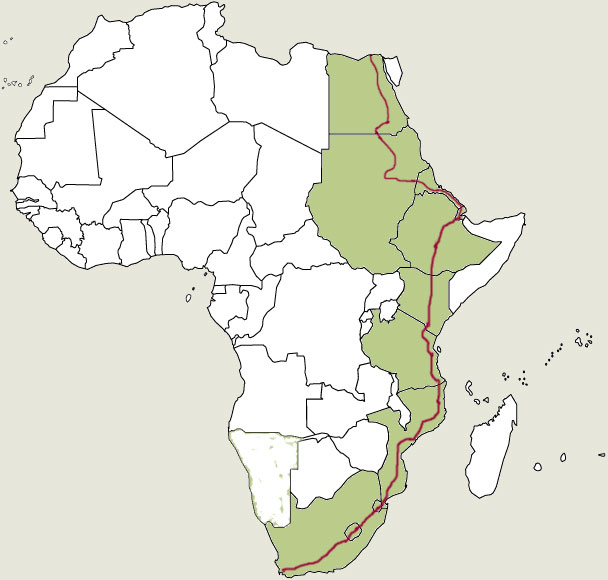 The landscapes of South Africa are perhaps the most diverse of the entire continent. We traversed the rolling winelands near Cape Town, before heading to the semi-arid Little Karoo and then on to the Great Karoo with its vast swathes of farmland inhabited only by hardy sheep and ostriches. After a stop in Bloemfontein, we cut into the mountain kingdom of Lesotho and tortured ourselves with a succession of high passes. The spectacular and spectacularly bone-jarring Sani Pass brought us back into South Africa. Qwa Zulu Natal was a succession of small towns and sugarcane plantations and a fair number of hills before reaching Durban. At that point, January 2008, we'd been on tour for more that a year and a half and were suffering from a serious case of road fatigue. It was the height of the Southern Hemisphere summer and the road further north into Mozambique promised to be sweltering hot. Time for a break. We flew to India for six months of leisurely cycling and extended periods of intensive yoga practice in Kerala and Karnataka.
The landscapes of South Africa are perhaps the most diverse of the entire continent. We traversed the rolling winelands near Cape Town, before heading to the semi-arid Little Karoo and then on to the Great Karoo with its vast swathes of farmland inhabited only by hardy sheep and ostriches. After a stop in Bloemfontein, we cut into the mountain kingdom of Lesotho and tortured ourselves with a succession of high passes. The spectacular and spectacularly bone-jarring Sani Pass brought us back into South Africa. Qwa Zulu Natal was a succession of small towns and sugarcane plantations and a fair number of hills before reaching Durban. At that point, January 2008, we'd been on tour for more that a year and a half and were suffering from a serious case of road fatigue. It was the height of the Southern Hemisphere summer and the road further north into Mozambique promised to be sweltering hot. Time for a break. We flew to India for six months of leisurely cycling and extended periods of intensive yoga practice in Kerala and Karnataka.
On July 19th, 2008 we were back on the African continent to continue the long route home. Beginning in Johannesburg, we headed on to Swaziland, then into Mozambique up the N1, before cutting up to Malawi via Tete and the border crossing at Mwanza. Laidback Malawi offered lots of easy cycling and nice camping at the many lodges dotting the lake.
Then it was on to Tanzania and a short break in Tukuyu to enjoy the cool climate and beauty of the surrounding forests and tea plantations. Winds and heavy traffic dogged us as we made our way to Dar es Salaam from where we hopped on a boat headed for Zanzibar. Once back on the mainland, we continued our bicycle journey north, stopping off at Bagomoyo and then made the long climb up to Lushoto. Here, surrounded by forests and streams, we found some respite from the heat and gorged ourselves on fresh cheese, brown bread and locally made fruit jams. We skirted around Kilimanjaro, then headed on to Arusha and into Kenya at the Namanga border.
After making the obligatory stop in Nairobi, we opted to head into Ethiopia via the west shore of Lake Turkana. The ride through tribal areas was pure adventure and we arrived at the Ethiopia border post of Omorate exhausted and longing for civilization. The rainy season was just coming to an end in Ethiopia's Omo Valley and we were faced with a washed out road and many (normally dry) river beds to cross. Cycling was a lot of work, but getting a glimpse of the colorful tribal peoples was well worth the effort. Arriving in Arba Minch marked a return to the comforts of 'civilization' and we rested up there for several days before continuing on towards Addis Ababa. Instead of following the heavily traveled main road, we took the newly-opened highway passing through Hosaina and Butajira. Aching legs were par for the course, but our efforts were well rewarded with spectacular views of the surrounding countryside.
From Gonder we descended down an almost completely paved road to the Sudan border at Metema. We pined for the cool highland air during our long, hot slog to Khartoum but certainly didn't miss the bands of 'You, You, You'ers who had hounded us through Ethiopia. The ride through the Nubian desert to Wadi Halfa was a time to enjoy the solitude of the desert and the beauty of the villages lining the lush banks of the Nile. The Sudanese spoiled us with warm hospitality and not a day passed with an invitation to tea, a meal, or lodging for the night.
Egypt came as something of shock with its well-developed tourist sector, well-stocked shops and local population well-versed in ripping off tourists. After immersing ourselves in a bit of culture in Luxor, we headed back into the desert in order to avoid the police escorts which are so common along the Nile route. The Western Desert varied from mind-numbingly monotonous to jaw-dropping beautiful. Camping amidst the arctic-like rock formations of the White Desert was a highlight, while slogging against a frigid headwind a test of our will to complete the ride to Cairo. Of course we did make it to Cairo and were thrilled to ride past the pyramids of Ghiza and terrified to navigate the clogged streets of Africa's largest city. Again it was back to the desert after leaving the African continent via the tunnel at Suez linking the mainland to the Sinai peninsula. More spectacular desert scenery awaited us, but with temperatures down to freezing at night we found it hard to adjust to the cool winter climate.


